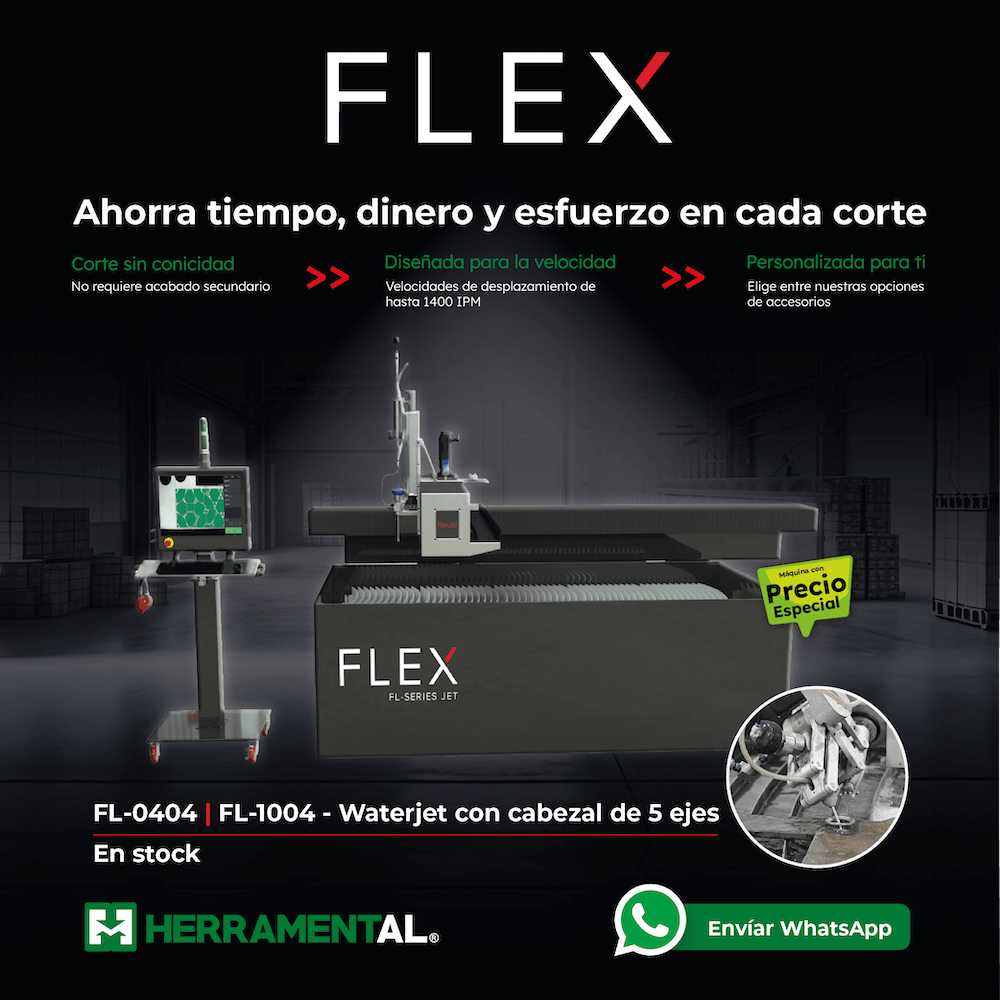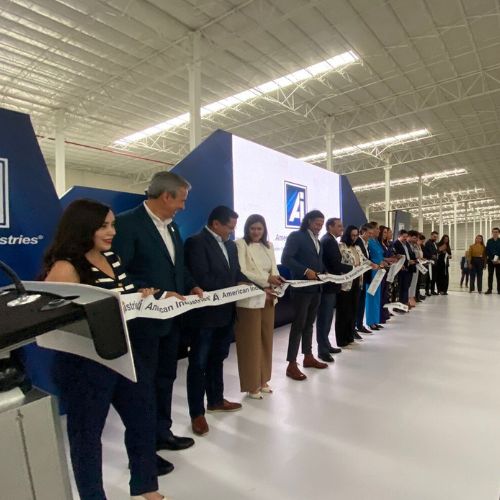La Sultana del Norte is one of the cities with the highest concentration of industrial complexes and parks within its borders. In all, 96 high-quality spaces find a home within its infrastructure, 38 of which are located in the Apodoca municipality.
According to Somos Industria’s map of the area, these parks stand out for bringing together more than 634 companies, 50% of which are located in Apodaca, the most important industrial municipality.
Parks like Prologis Agua Fría Industrial Park, American Industries Apodaca Industrial Park, Apodaca Technology Park, CPA Business Center Apodaca, Milenium Industrial Park, Stiva Apodaca, and Finsa Apodaca, among many others, stand out for offering innovative sites with high performance in manufacturing and logistics.
Escobedo is one of the municipalities that houses the most companies in its industrial zone, with 116 companies installed.
The other companies are located in industrial areas hosted by different municipalities: Ciénega de Flores, Santa Catarina, Guadalupe, Monterrey, Salinas Victoria, and Montemorelos.
"Industrial parks that are safe, have high-quality buildings, are flexible in their negotiations, and can claim the presence of leading companies are those that attract the most investors. Industrial parks such as Nexxus, FINSA, Prologis, VYNMSA, Millennium and others have been some of the parks that have most benefitted from investments by foreign clients," said Sergio Reséndez, Director of Colliers International in Monterrey.
Guadalajara is another city in which the Somos Industria Maps are distributed. This region brings together a total of 32 industrial parks, which house 292 companies.
The Zapopan municipality is home to 131 companies, followed by Tlaquepaque with 80, El Salto with 53, and Cocula, Acatlán de Juarez, La Barca, and Tala with under four companies.
The first two municipalities count on the presence of companies such as Grainger, Kenya, Vitro, Green Valley, Mabe, Siemens, Continental Automotive Guadalajara, and Ferrero of Mexico, among many others.
"Guadalajara has much to offer. It is the second largest city with consumption potential in Mexico. It has talented personnel and a quality workforce. It is one of the poles of distribution to the west of the country," said Hardy A. Milsch, Vice President, Market Officer Guadalajara & Bajío for Prologis.
Today Guadalajara shows a trend toward warehouse and distribution spaces, with taller buildings, increased platform density, and spacious switchyards, among others.
"ProLogis knows the sector and has developed our areas accordingly. We are at the forefront of such logistical trends throughout the world," said the manager.
El Bajío: Industrial Potential
The Bajío zone has been one of the most attractive for investment and industrial growth.
In recent years, this zone has stood out for being the headquarters of large automotive and aerospace companies, among others.
The state of Querétaro, for starters, brings together 451 businesses in 21 parks.
In the El Marqués municipality, 312 companies come together in nine different industrial parks, among which are notable El Marqués Industrial Park, Bernardo Quintana, La Noria Industrial Park, and Finsa Industrial Park, among others. Bombardier, International Automotive, Johnsson Matiney of México, Freudenberg-Nok México, Siemens, Meggit, Snecma, Automotive Lighting, and Arvin Meritor are some of the businesses located in the aforementioned municipality.
In contrast, the city of Querétaro has eight parks that house a total of 100 businesses.
As a state, Querétaro has drawn attention for the way it attracts investors due to its excellent location: it is in the center of the country and a point in which the country’s most important highways and railways converge.
"Querétaro makes available a young and qualified workforce and offers access to a potential market of more than 45 million people within a 350-kilometer radius that includes six of the most important cities in Mexico. Also, it is distinguished by its social peace since it enjoys one of the lowest levels of crime in the country,” said René Jasso, Director of the Querétaro Industrial Park.
For her part, Ana Paula Cedillo of the Commercial Division at El Marqués Industrial Park said that quality of life, safety, and industrial boom in the information technology, automotive, aerospace, and other sectors have made Querétaro into an industrial potential.
Guanajuato is another state noted for the many large companies already installed there, as well as for the companies that have recently arrived, such as Mazda, Honda, Volkswagen, and Pirelli.
According to the latest release of Somos Industria Maps, the state houses 17 industrial parks: five in Celaya, five more in Silao, three in Irapuato, two in Leon, and one each in Salamanca and San Jose de Iturbide.
In these areas are located parks like Celaya Industrial Zone, Castro del Río Industrial Technological Park, León Industrial Zone, Fipasi Industrial Park, Silao Industrial Zone, and Opción Los Nogales Industrial Zone, which all stand out for having the highest concentration of companies installed within them.
Another state in which the Somos Industria Maps are distributed and that forms part of the Bajío area is San Luis Potosi.
This location offers an excellent infrastructure, available land, skilled labor, and competitive prices.
San Luis Potosí has 13 industrial parks, including San Luis Potosí Industrial Zone, Impulso Industrial Park, Fundidores Industrial Park, Finsa Industrial Park, Millennium Industrial Park, and Logistik Industrial Park, among others.
In total, the parks bring together 334 companies.
"The infrastructure that has been achieved by San Luis Potosí can compete with any city in Mexico and abroad. There are no industrial parks that cannot offer train tracks either on the premises or nearby, natural gas, electricity, potable water, sewers, storm drains, fiber optics, communications, treated water, and fire-fighting networks, among others," said Maricela Valencia, Market Analyst for Citius Capital.
Advantages of Somos Industria Maps
Besides being excellent promotional tools for cities, Somos Industria Maps offer a broad vision of potential industrial sites.
"Somos Industria Maps are a very useful product for investors coming into the country with business plans. They give an overview of the location of industrial parks as well as the businesses located in them, with the aim of allowing business people to evaluate the best place to settle according to their activities," said Ramon de la Garza, Project Manager of Somos Industria Maps.
"The maps are a useful tool for investors since in them they can have a panorama of the industrial site options that exist and find one that meets their needs," said Hardy A. Milsch, Vice President, Market Officer of Guadalajara & Bajío for Prologis.
For Sergio Resendez of Colliers International in Monterrey, Somos Industria Maps are an indicator that gives clients confidence before they settle in a particular zone. With the maps, clients are able to visualize who their neighbors will be, what providers are in the area, and what type of industry predominates there.
"They also work with investors to assess the suppliers, plan their sales strategy, and locate potential customers in different areas," remarked the executive.
Industrial Trends
Mexico is, without a doubt, an attractive country for investing, and this is reflected by the arrival of large and important companies to the states of Guanajuato, Querétaro, San Luis Potosí, Guadalajara, and Nuevo León.
Many of these companies have invested in expansions and others have come to Mexico for the first time.
And what are investors looking for in a city? It is a vital question.
René Jasso, Director of the Querétaro Industrial Park, said that today’s investors are looking for industrial plants within a secure environment, preferably in an industrial park that provides all the necessary infrastructure services for the management and operation of a manufacturing company. Similarly, issues like renewable energy and environmental care are priorities for any industry these days.
"Therefore, the industrial plants of today must be built taking into account the “LEED” certification (an acronym for Leadership in Energy & Environmental Design), which is based on the incorporation of issues related to energy efficiency, alternative energy use, indoor environmental quality improvement, water consumption efficiency, sustainable development of open land, and the selection of materials to be used in construction," said Jasso.
The executive said that the industrial parks in Mexico have evolved to such an extent that they have now entered a new era. A market once dominated by public sector participation has evolved into a market driven and modernized by private initiative and, more recently, a market with strong foreign investment participation by local and regional developers.
It is also noted that new projects are beginning to be clearly divided between industrial parks and logistics parks due to trends in the country.
"Some of the characteristics of modern parks are construction density: 50% of construction and 50% of outdoor areas. They have switchyards and separate entrances free from flooding, as well as surveillance, controlled entrances with access gates, underground infrastructure, and fire-protection systems. Furthermore, there is an increasing commitment to sustainability," said Jasso.
Ana Paula Cedillo, of the Commercial Division at the El Marqués Industrial Park, said that investors also look for facilities with the highest standard in material and construction quality, as well as versatile buildings that meet companies’ needs and in which they can grow over the next 10 to 15 years.
The Director of Colliers International in Monterrey, Sergio Reséndez added that investors also require plants with wide bays and heights of 28 feet or more.
"Customers are looking for a robust infrastructure with electrical capacity. The industrial parks that have their own substations or have KVA on reserve are the most attractive. The operating costs or CAM are also important in comparative analyses," said the executive.











































































































































































